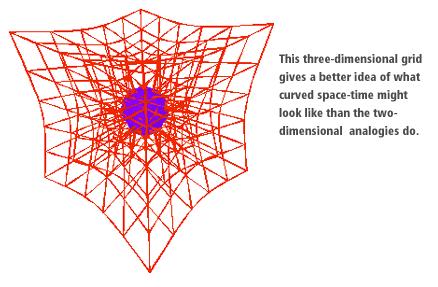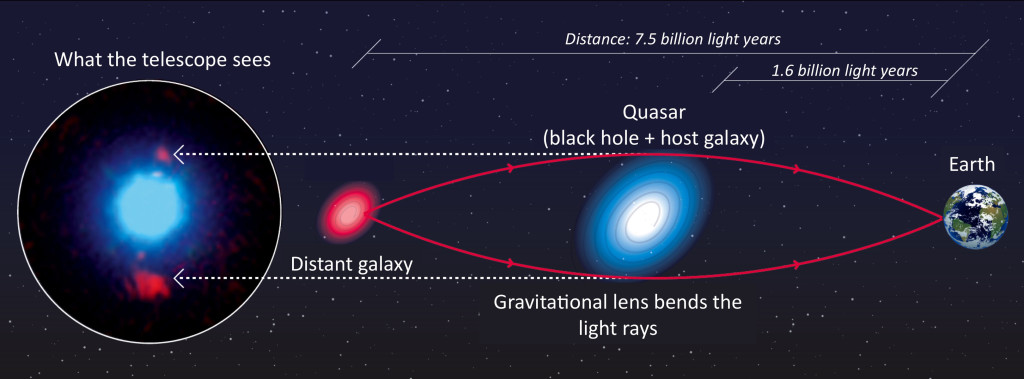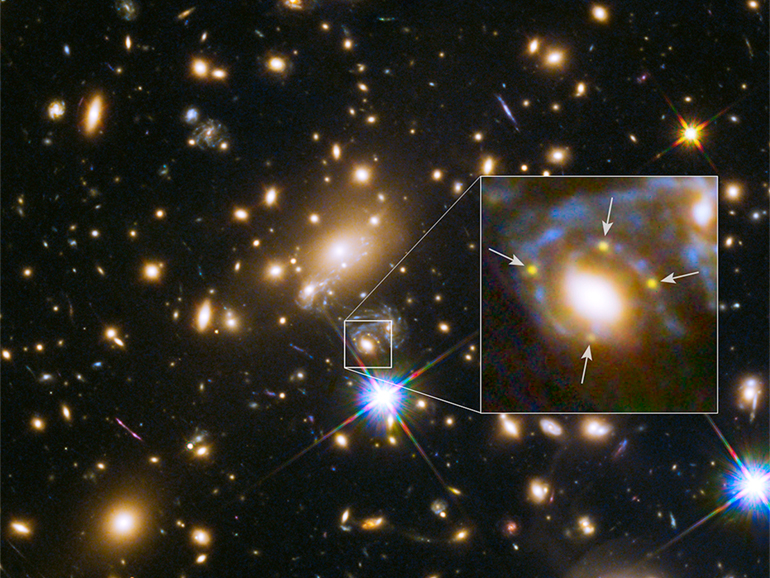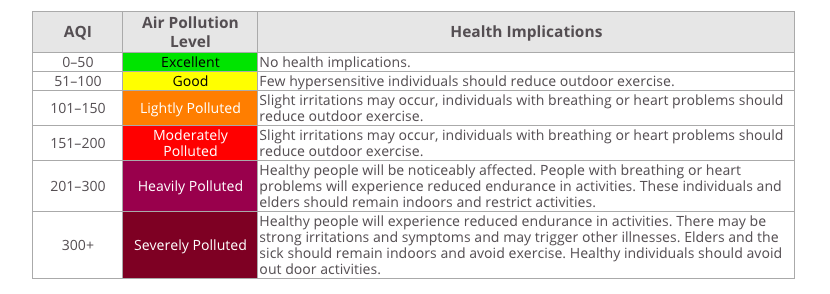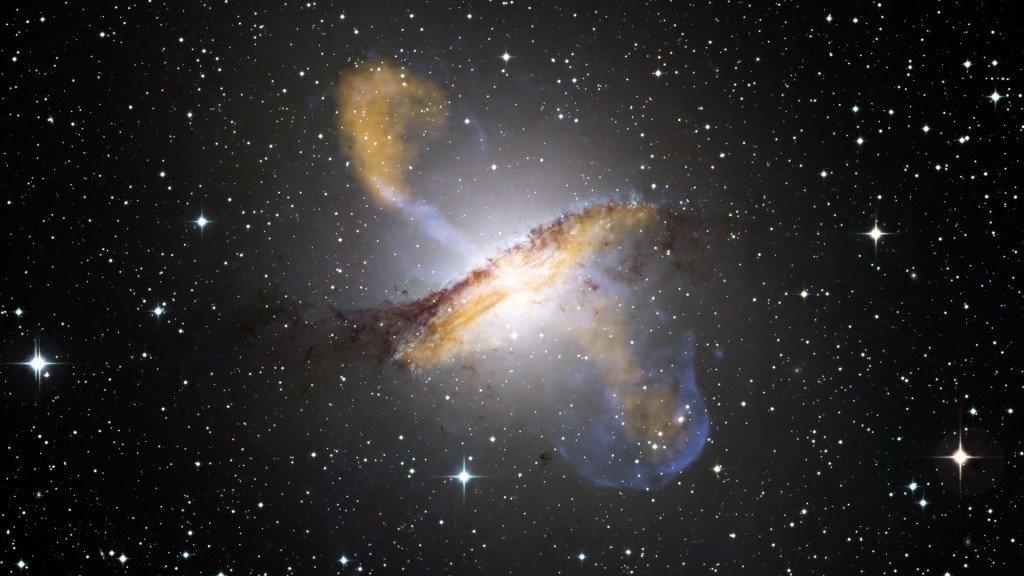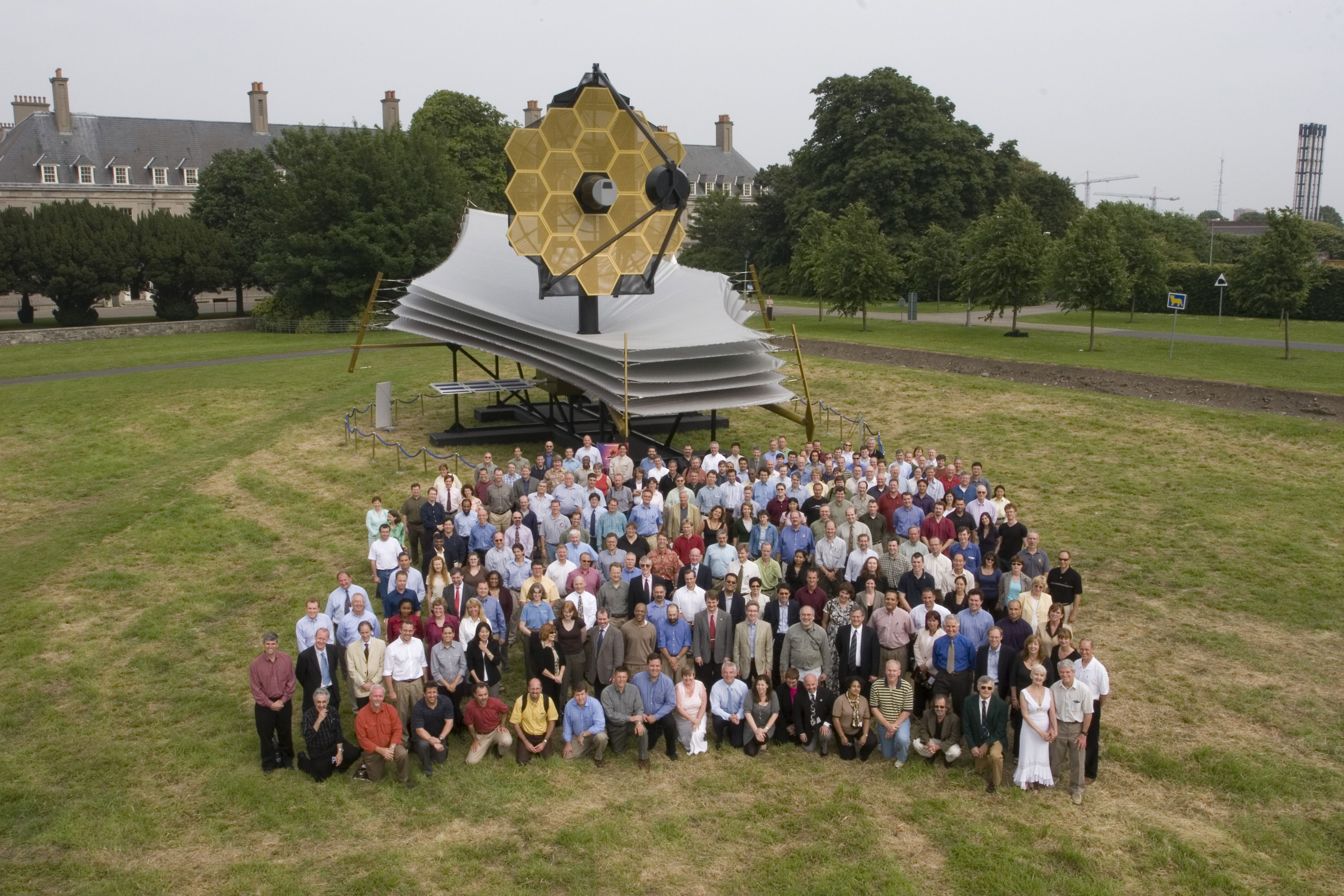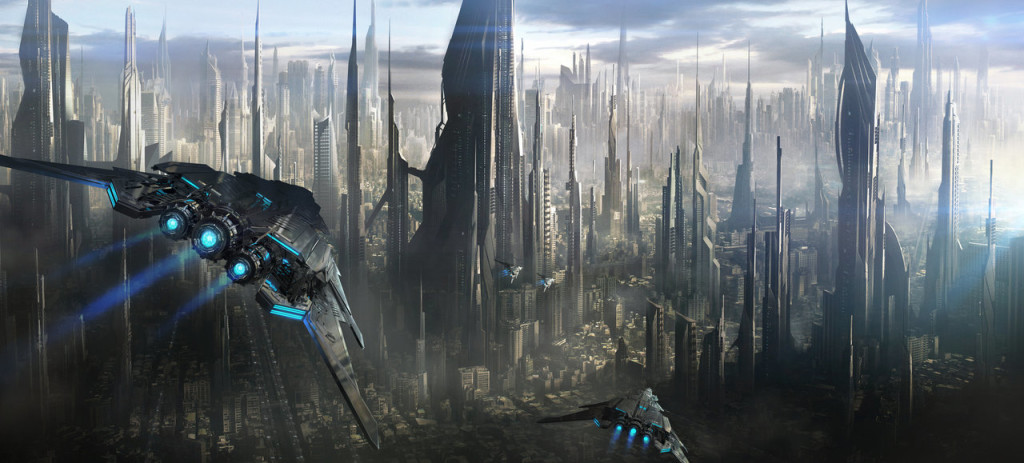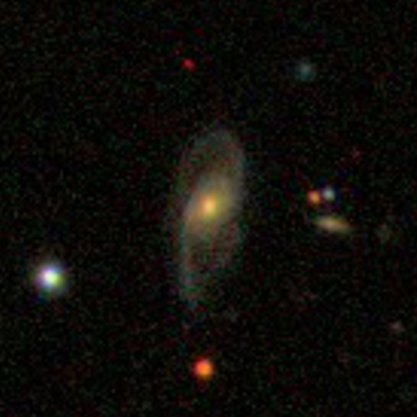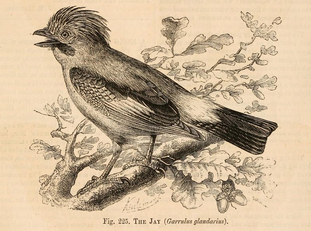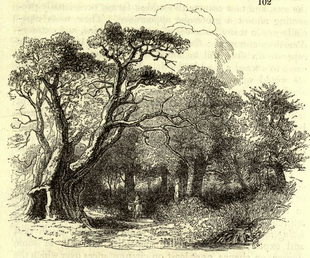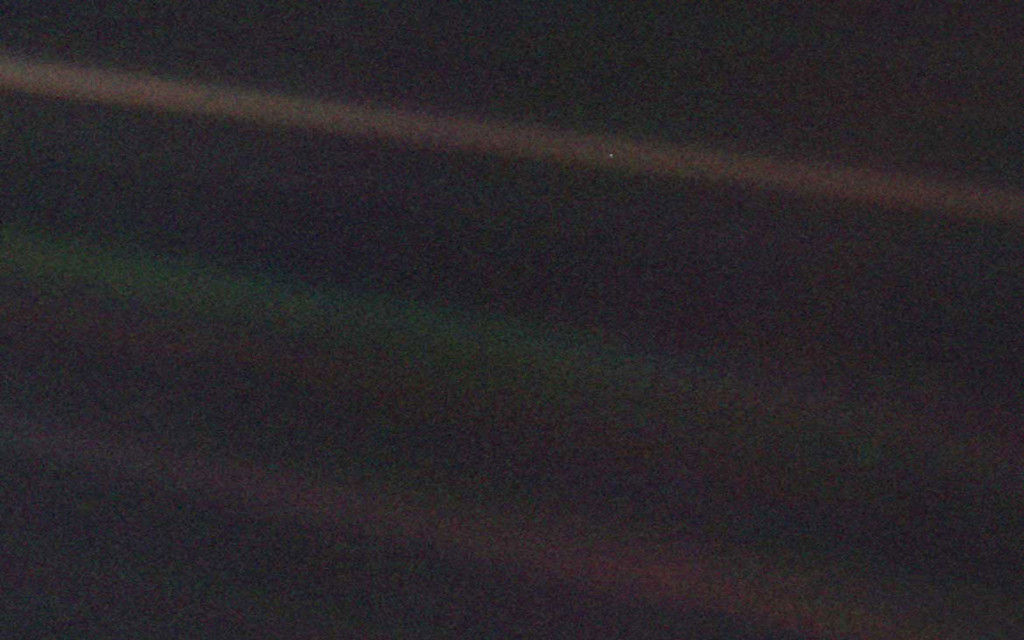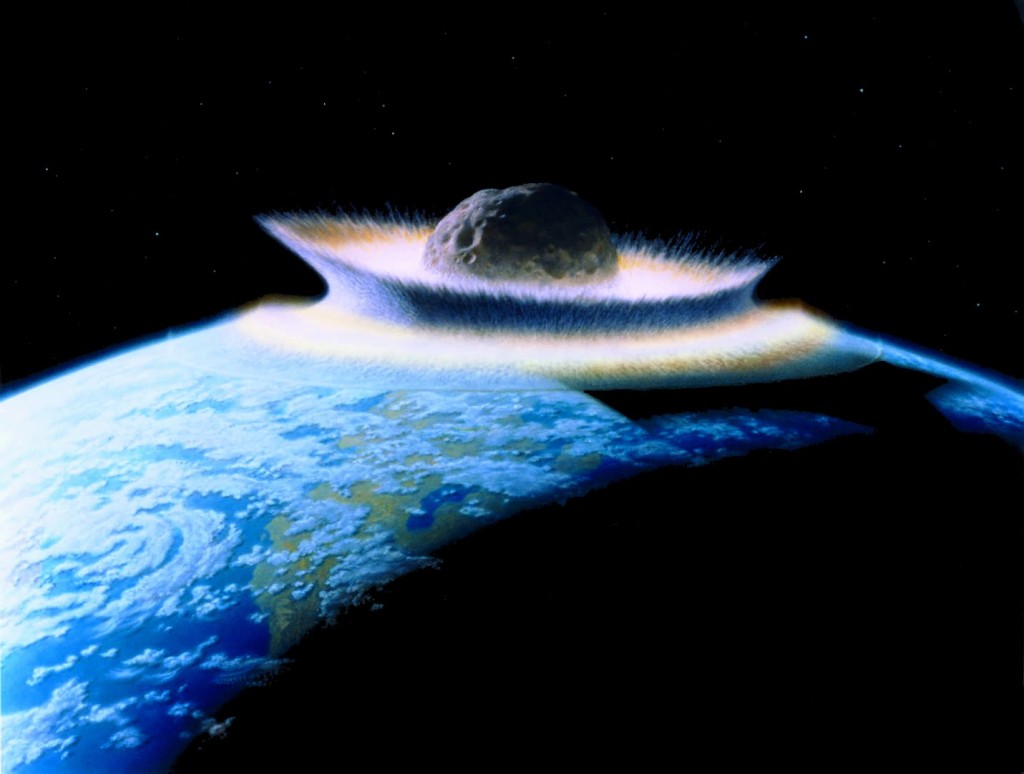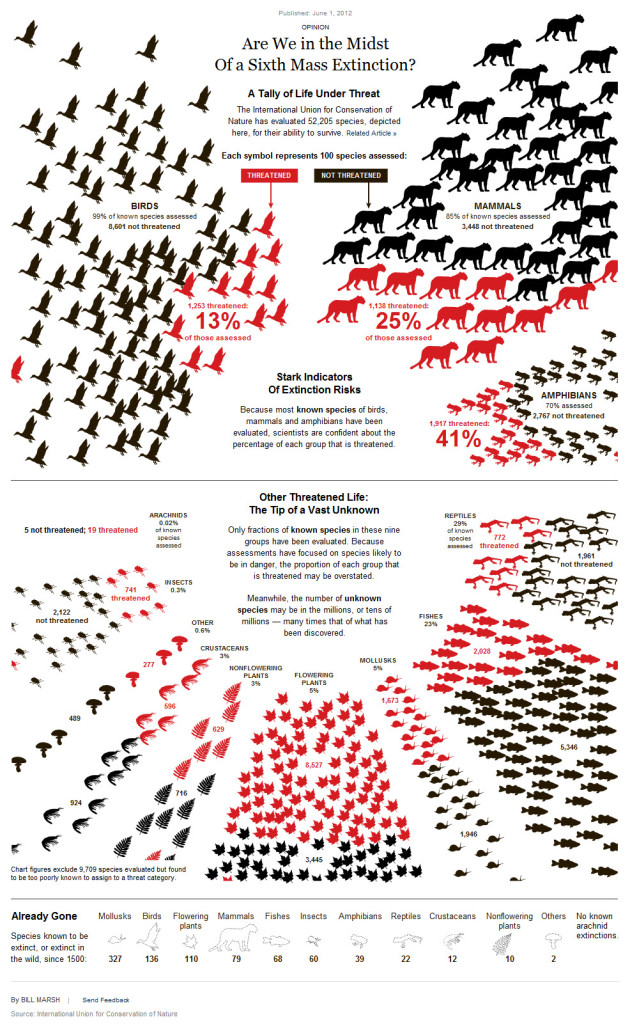-

-

-

-

-

-

-

-

-

-

-
-

-

-

-

-

-

-

-

-

-

-

-

-

-

-

-

-

-

-

-

-

-

-

-

-

-

-

-

-

-

-
-

-

-
 TOTW: Google's Project Ara Modular Phone May Be The Future Of SmartphonesOctober 30, 2014
TOTW: Google's Project Ara Modular Phone May Be The Future Of SmartphonesOctober 30, 2014 -

-

-

-

-

-

-

-

-

-

-

-

-

-

-
-
-

-

-

-

-

-

-

-

-

Posts tagged NewsNow Science
How Einstein Predicted The Future: A Story Of Gravitational Lensing
09 years
It’s 1916. A relatively unknown (see what I did there) physicist named Albert Einstein has just released a couple of papers about his very weird but interesting Theory of Relativity, and you can’t decide what you want to think about it. The papers have gained Einstein some popularity in the physics community, many agreeing with what he had to say, some disagreeing. Many years later, once the theory was proven through observations of Mercury’s orbit and other various tests throughout the years, Einstein became an internationally renowned, scientific rock star. Now it’s 2015, 100 years after Einstein introduced his ingenious theory. Einstein is still known as the epitome of human intelligence, and his fame and prestige is as widespread as ever, while the repercussions of his work still permeate the modern scientific landscape – so much so that it allows us to predict the future.
Before we get into the whole time travel stuff, it might help to understand more about what exactly General Relativity is. Despite the fact that Einstein is known as a genius worldwide, the specifics of what his theory actually means are lost on most people who haven’t extensively studied it. Whereas we see time and space as distinct, Einstein thought of them as one thing: “spacetime”. (Try not to think too hard about that merging space and time part.) Where Newton thought that there was this mysterious force called gravity that radiated from anything with mass, Einstein had his own theory, which assumed that, rather than using an enigmatic force to pull nearby things to it, objects with mass (especially large ones) curve spacetime. So, when following the easiest path through spacetime, which all objects naturally do, objects near another large object, say the Earth, naturally get pulled toward it. Now there’s a proposition for you: just by existing, you disrupt the fabric of the universe by curving it.
But it’s true, and as I wrote earlier, general relativity has been confirmed through many different experimental observations over the years. One such confirmation came through the discovery of a phenomenon that Einstein predicted in his papers, but never expected to be observed because of its rarity: gravitational lensing. Gravitational lensing occurs around large objects, though not just large as in the Earth or even the Sun, but large as in supermassive galaxy clusters. As it turns out, Einstein’s idea that things with mass curve spacetime not only explains gravity but also implies gravitational lensing. Because large objects curve spacetime, really large objects like galaxy clusters curve spacetime much more, enough so that light coming from behind the cluster becomes visibly curved.
The light coming from an object directly behind the galaxy cluster, a smaller galaxy cluster for instance, will get curved around the cluster in the foreground and scattered away from its previous course, potentially toward the awaiting telescopes here on Earth. Einstein thought it would be unlikely that such a situation that we could observe on Earth would happen anytime soon; that a gravitationally lensed light source would happen in our direction, that the light would be lensed toward us, and that we’d be ready to receive it. He happened to be wrong on this one, as we have observed many instances of gravitational lensing in action over the years, the image below being one such example.
And one more thing: gravitational lensing essentially peers into the past. Because light takes time to travel to Earth, the farther away you look in a telescope, the further back in time you see. This doesn’t affect us in day to day life, but with large space telescopes like Hubble we can see billions of year into the past. Since gravitational lensing acts very similar to a telescope, taking light from far away and magnifying it, the foreground galaxy cluster acting as the lens, we can legitimately say that gravitational lensing peers into the past.
So, aside from being a fascinating phenomenon and an example of General Relativity in action, gravitational lensing has been used over the years be a tool to peer into the universe’s history, and recently, into the future as well. Researchers at the University of California, Berkley, published a paper in Science that detailed their observations and subsequent research on a supernova they named Refsdal after Norwegian astronomer Sjur Refsdal. Patrick Kelly, an astronomer at the university, noticed something odd while looking through photos taken by the Hubble Space Telescope. What Kelly noticed was what’s called an Einsteinian Cross, such as the one below:
An Einsteinian Cross occurs when gravitational lensing bends the light around a galaxy cluster and toward Earth in a way that projects 4 images of the same star around the forefront galaxy in the shape of a cross. In this case, the star was actually a supernova, when a star explodes in a fantastic burst of energy and light. Supernovae are one of the biggest and brightest events in the universe, releasing up to around 1044 joules, or the total energy released by an average star in it’s 10 billion year long lifetime. But supernovae are fairly rare, so you can imagine how lucky it was to observe a gravitationally lensed one.
As it turns out, Refsdal is actually 9 billion light years away, and since the supernovae is a one-time event, we can conclude that gravitational lensing has allowed us to photograph the supernovae 9 billion years in the past, almost three-quarters of the way to the beginning of the universe. Because of an odd phenomenon in spacetime, and lucky happenstance, we get to observe the death of a star billions of years ago. And not only that, but we get to see it multiple times.
While in most drawings and explanations of gravitational lensing, we see the light being bent around a perfectly spherical bubble of gravitational attraction, whereas in reality that gravitational bubble can be warped. Essentially, the path around the cluster can differentiate the light paths enough so that some take longer than others. The direct effect of this differentiation is that we get to see the supernova over and over again, as the light paths keep hitting us at different times. We only observed one so far, in November of this year, but we can assume that we missed the explosion being replayed twice in the 20th century, and we can even predict that another will appear in the next 1-4 years.
And there we have it! We have successfully predicted the future, although admittedly in a fairly specific way. But the usefulness of this situation spans more than just the coolness of predicting the future and seeing into the past. “It’s a wonderful discovery,” said Alex Filippenko, a professor of astronomy at Berkley and member of Kelly’s team. “We’ve been searching for a strongly lensed supernova for 50 years, and now we’ve found one. Besides being really cool, it should provide a lot of astrophysically important information.” For instance, with more research the scientists may be able to gain insight into how supernovae work, how gravitational lensing work, in turn the nature of spacetime, and even how dark matter works, which makes up a large portion of the gravitational pull affecting the light from the supernova’s original explosion. Discoveries like these are not only exciting and interesting, but they allow us to continually understand more and more about the world, and universe, around us.
China’s Pollution Problem Explained
09 years
Just this week, China issued a “red alert” for the country’s capital, Beijing. The alert was used as a warning to their population that the smog levels in Beijing and the surrounding area has risen to a dangerous level, that is, even more dangerous than before. In response, schools are advised to be shut down, the number of vehicles on the roads will be restricted, and all factories and construction sites will be temporarily closed. And it’s not as if no one could see this coming, as China’s pollution problem has only worsened in recent years. Wearing masks over your mouth, like the type you are given at the doctor’s office when you are sick, has become commonplace all over the city, with some people even donning large filtering masks instead. In fact, companies are now taking advantage of this demand, releasing a range of masks in different colors and styles. Beijing has reached a point where the pollution is inhibiting daily life in a major way: outside of buildings, the ever-present smog enveloping the city means that simply walking outside has come dangerous.
Although it’s clear from a glance at the smog that Beijing’s pollution situation is more than just unhealthy, it’s always good to check that with science. An AQI, or Air Quality Index, is the way that most countries around the world measure the level of pollution in a simple way that the public can understand and act upon. In China, the AQI is measured very frequently throughout major cities and often influences behavior, e.g., whether they go outside at a given time. The recommended, healthy AQI level globally is from 0-50. Here in the Bay Area, where I live, the AQI is around 15. In the city of San Francisco it rises to around 40, which is still good. In London the AQI is around 75, which is worse but still considered acceptable. The exact hierarchy of the severity of the pollution varies between countries, but both China and the United States use a system that is very similar to the table below:
At the time of writing, the AQI level in Beijing was 323. Less polluted areas of the city have an AQI of 220, worse areas an AQI of a whopping 445, just 55 points shy of literally being off the scale (typically AQI is 0-500). Clearly, China have dug themselves into a whole that seems very difficult to escape. “I’m used to the smog,” Wolf Hu, a resident of Beijing, told CNN. “I’d find a day when the sky is blue unusual.”

We can all agree, even the Chinese government, that the air in China’s major cities is extremely hazardous and puts their population in unnecessary danger and discomfort. But recent studies have shown that the incredibly high pollution levels in China do much more than put their population in discomfort. The most dangerous pollutant, PM2.5, where PM stands for particulate matter, targets particulates that are 2.5 microns in diameter or less. For comparison, a human hair is around 40-50 microns across. Particular matter consists of dust, soot, smoke, liquid droplets, or anything that happens to be floating around in the air at the time. While particulate matter is incredibly small, if any happens to float into your lungs when you breathe, the particles can cause a lot of damage, including increasing risk of a variety of heart and lung related diseases.
It should be no surprise then, as the PM2.5 level all over the country is very high, that the population have started to feel the consequences. Using new data released by the Chinese government, a study done by researchers at the University of California, Berkeley found that 1.6 million people die from heart, lung, and stroke problems stemming from breathing pollution in China every year. That’s 4,000 people dying every day, 17% of all of the annual deaths in the country. The very same study also found another eye-opening statistic: breathing in the pollution in Beijing and other cities in China does equivalent damage to your lungs as smoking 40 cigarettes per day does.
The state of China’s air is, to say the least, abysmal. The term “airpocalypse” has already been coined to refer to the problem. To be honest, it like the setting of a young-adult dystopian novel than the state of one of the global superpowers of the 21st century. To their credit, the Chinese government has (belatedly) recognized the problem. Li Keqiang, the Chinese Premier, has stated that China must “fight with all their might” against pollution, and has previously “declared war” on pollution, although no real plan or action has been taken to reduce pollution or cut emissions. China and the United States created a joint agreement for China to slow, peak, then cut carbon emissions by 2030, and both nations attended the landmark Paris climate summit in which leaders from around the world are collaborating on a solution to limit climate change. We may finally be going in the right direction, but it will certainly take an effort from the entire world to try and keep the world a clean, vibrant, and vivacious place, free of carbon. If there’s one thing we can all agree on, it’s that a world where a blue sky is rare and the outside is feared is no place that anyone wants to live in.
Sources:
http://www.cnbc.com/2015/08/18/china-air-pollution-far-worse-than-thought-study.html http://www.theguardian.com/environment/2015/dec/07/beijing-pollution-red-alert-smog-engulfs-capital http://www.theguardian.com/cities/2014/dec/16/beijing-airpocalypse-city-almost-uninhabitable-pollution-china http://aqicn.org/city/beijing/ http://www3.epa.gov/pm/ http://www.cnn.com/2015/12/07/asia/china-beijing-pollution-red-alert/ http://www.wikiwand.com/en/Air_quality_index#/United_States http://www.theguardian.com/environment/2015/mar/05/china-vows-to-fight-pollution-with-all-our-mightAugmented Vs. Virtual Part 2 – Augmented Reality
09 years
Reality is very personalized, it is how we perceive the world around us, and it shapes our existence. And while individual experiences vary widely, for as long as humans have existed, the nature of our realities have been broadly relatable from person to person. My reality is, for the most part, at least explainable in terms of your reality. Yet as technology grows better and more widespread, we are coming closer to an era where my reality, at least for a period of time, may be completely inexplicable in the terms of your reality. There are two main ways to do this: virtual reality and augmented reality. In virtual reality, technology immerses you in a different, separate world. My earlier article on VR was the first of this two-part series, and can be found HERE.
Whereas virtual reality aims to totally replace our reality in a new vision, augmented reality does what the name suggests: it augments, changes, or adds on to our current, natural reality. This can be done in a wide variety of ways, the most popular currently being a close-to-eye translucent screen with projected graphics on top of what you are seeing. This screen can take up your whole field of view, or just in the corner of your vision. Usually, the graphics or words displayed on the screen is not completely opaque, since it would then be blocking your view of your real reality. Augmented reality is intrinsically designed to work in tandem with your current reality, while VR dispenses it in favor of a new one.
With this more conservative approach, augmented reality (AR) likely has greater near-term potential. For VR, creating a new world to inhabit limits many of your possibilities to the realm of entertainment and education. AR, however, has a practically unlimited range of use cases, from gaming to IT to cooking to, well, pretty much any activity. Augmented reality is not limited to, but for now works best as a portable heads-up display, a display that shows helpful situational information. For instance, there was a demo at Epson’s booth at Augmented World Expo 2015 where you got to experience a driving assistance app for AR. In my opinion, the hardware held back the software in that case, as the small field of view was distracting and the glasses were bulky, but you could tell the idea has some potential. At AWE, industrial use cases as well as consumer use cases were also prominently displayed, which included instructional IT assistance, such as remotely assisted repair (e.g., in a power plant, using remote visuals and audio to help fix a broken part).
Before I go on, I have to mention one product: Google Glass. No AR article is complete without mentioning the Google product, the first AR product to make a splash in the popular media. Yet not long after Google Glass was released, it started faded out of the public’s eye. Obvious reasons included the high price, the very odd look, and the social novelty: people couldn’t think of ways they would use it. Plus, with the many legal and trust issues that went along with using the device, it often just didn’t seem worth the trouble. Yet rumor has it that Google is working on a new, upgraded version of the device, and it may make a comeback, but in my opinion it’s too socially intrusive and new to gain significant near-term social traction.
Although many new AR headsets are in the works (most importantly Microsoft’s HoloLens), the development pace is lagging VR, which is already to the stage where developers are focused on enhancing current design models, as I discussed in the previous VR article. For AR, the situation is slightly different. Hardware developers still have to figure out how to create a cheap AR headset, but a headset that also has a full field of view, is relatively small, doesn’t obstruct your view when not in use, and other complications like that. In other words, the hardware of AR occasionally interrupts the consumption of AR content, while for VR hardware, the technology is well on its way to overcoming that particular obstacle.
Beyond these near-term obstacles, if we want to get really speculative, there could be a time when VR will surpass AR even in pure utility. This could occur when we are able to create a whole world, or many worlds, to be experienced in VR, and we decide that we like these worlds better. When the immersion becomes advanced enough to pass for reality, that’s when we will abandon AR, or at least over time use it less and less. Science fiction has pondered this idea, and from what I’ve read, most stories go along the lines of people just spending most of their time in the virtual world and sidelining reality. The possibilities are endless in a world made completely from the fabric of our imagination, whereas in our current reality we have a lot of restrictions to what we can do and achieve. Most likely, this will be in a long, long time, so we have nothing to worry about for now.
Altogether, augmented reality and virtual reality both are innovative and exciting technologies and that have tremendous potential to be useful. On one side, AR will be most likely used more than VR in the coming years for practical purposes, since it’s grounded in reality. On the other hand, VR will be mostly used for entertainment, until we hit a situation like what I mentioned above. It’s hard to pit these two technologies against each other, since they both have their pros and cons, and it really just depends on which tech sounds most exciting to you. Nonetheless, both AR and VR are worth lots of attention and hype, as they will both surely change our world forever, for better or worse.
The James Webb Space Telescope – An Astronomer’s Dream
09 years
Astronomy is all about looking up at the stars. Trying to figure out how the universe works and where our place as humans on Earth is in that giant universe. Where geneticists and particle physicists work on the smallest scales, astronomers work on the largest physical scales: the firmament. For a long time, the naked eye and then simple telescopes were enough to make productive observations, but, science has reached a point in astronomical development where we need ever better equipment to realize new discoveries. The bigger, more expensive, and technically advanced the telescope, the better. And sending it into space is even better, to render the best images and readings.
That seems like a big ask, and it is. The Hubble Space Telescope made its way into popular culture history as the first scientific telescope the public actually knew and cared about. Well, in 2018, a new telescope will be launched that is even greater than the legendary Hubble. It’s called the James Webb Space Telescope (JWST), and it’s pretty much an astronomer’s dream.
“Why an astronomer’s dream?”, you may be asking. The answer is fairly straightforward: the JWST is a gigantic, high-tech, multi-purpose instrument. To put it in perspective, the Hubble telescope had a mirror, essential in capturing astronomical images, of 8 feet across. The 8-foot mirror produced images like this:
Now consider the JWST. It is planned to have a mirror of a whopping 21 feet and 4 inches in diameter. Made up of 16 smaller, hexagonal mirrors, the incredible size of the James Webb Space Telescope is only one of the many parts of the telescope that is making astronomy nerds all over the world very excited. Being is a multi-purpose telescope, the JWST has much to offer scientists. Below I describe only a handful of JWST’s most prominent features, abilities, and facts:
Infrared Radiation Detection
The James Webb Space Telescope detects infrared wavelengths of light, rather than visible spectrum. If you’re not an astronomy nerd, you may wonder why this difference is significant. Well, infrared is close enough to the visible range so that telescopes can use the light to create an image our eyes can understand, but, it is far enough outside of our visible range to distort the colors, and also have some key unique qualities. For instance, unlike visible light, infrared light isn’t impeded by interstellar dust and gas. This means that the JWST will have largely unobstructed views of what were previously clouded interstellar nurseries; where stars form. Hubble couldn’t peer effectively into these nurseries due to their surrounding gas and dust, but the JWST can. This will give astronomers a look into the formation of stars, which is still shrouded in mystery.
Not only that, but infrared radiation emanates from cooler objects: you have to be as hot as fire to give off significant amounts of visible light, and the Earth is obviously not, but everything from a tree to you emits infrared light, which is precisely how night vision goggles function. More importantly planets emit infrared radiation, but stars don’t as they are too hot and radiate visible (and shorter wavelength) light. That means that, for the first time, we may be able to take photos of exoplanets themselves. Before, with Hubble, stars far outshone even the biggest of planets, by factors of 100 -1000 times. Since suns emit much less infrared radiation, we will be able to focus on the planets themselves, and may even get to take images of the first planets outside our own solar system. Pretty exciting, even for non-astronomy nerds.
Lagrange Point
So, where will this telescope be orbiting? Technically, it’s orbiting the sun, but the JWST will reside at a Lagrange Point in our solar system, which is a very cool astrophysical place where, and this is an oversimplification, the gravity of the sun and the earth balance out so that could be thought of as not orbiting anything at all, but rather just floating still in space. The gravity of our planet and the sun are in balance at Lagrange points, enabling the telescope to have a perfect, unmoving view of the stars. There are three such Lagrange Points on the Earth-Sun axis: L1, directly between the Sun and Earth; L2, on the other side of the Earth away from the sun; and L3, on the other side of the sun entirely. JWST will reside at L2.
This, of course, has upsides and downsides. First of all, being in the Lagrange Point means that it is more than 1 million miles away from Earth, i.e., we will have no way of fixing it if anything happens to it. And, as Hank Green reminds us in the video above, we have had to fix the Hubble a bunch of times, and that just won’t be possible with the JWST. Basically, we better get it right the first time. Also, the JWTS is so massive that it can’t fit into a rocket fully-assembled, so NASA engineers have had to design a complex unfolding system that could go wrong at any moment.
It Can See 13.4 Billion Years Into The Past
Yup, you read that right. Hubble could look far into the past, but not nearly as far as the JWST. Given the time light takes to reach our Earthbound eyes, were always seeing the universe as it existed in the past. As a result, the farther away you focus your telescope, the closer to the Big Bang you are able to see. Whereas the Hubble Ultra-Deep Fiild could look 7-10 billion years into the past, the James Webb Space Telescope, with its much larger mirror, can peer fully 13.6 billion years into the past, almost reaching the point of “first light.” First light was the time after the Big Bang when the universe cooled to a point where the very first galaxies could form and the energies begin to radiate light: the “First Light”. With the JWST, we are literally seeing all the way back in time to the beginning of the universe. There’s no doubt that this will allow astronomers and cosmologists to answer many previously unanswerable questions about how the universe formed. If this doesn’t make you excited for the launch of the telescope in 2018, nothing will.
Now that you’ve heard all that, can you possibly not be counting down the days to the launch three years from now? To recap: the JWST can take pictures of planets outside our solar system, see stars being born, and see the first galaxies in the entire universe being born. It sounds like something out of a science fiction book, but it’s not. NASA expects to spend $8.7 billion on this telescope, which is a lot, but in my opinion, the investment is far better than spending that amount for a popular instant messaging app, as Facebook recently did. The James Webb Space Telescope is truly an astronomer’s dream, and I can’t wait to see what discoveries are made because of it.
The Simulation Argument Part #1 – The First Proposition
010 years
This is the first article in FFtech’s series on The Simulation Argument. Enjoy, and check back for the following articles in the upcoming weeks.
*Warning – the following is incredibly speculative.*
Life seems real, right? This sounds like an obvious statement – of course life is real. That’s what life is. We are living, breathing humans, going about our daily lives, playing our part in the grand theater of life.
Or so we think.
Ok ok, I’ll stop being dramatic. This isn’t what you think; I’m not going to tell you that you’re a reincarnation of a turtle, or that you’re a ghost or spirit. But what I’m going to propose may seem even more preposterous. Brace for it. Ready? Using logical steps, some are arguing that they can prove the likelihood that we are living purely in a simulation is very high.
Whaaaat?? How could we possibly be living in a simulation, with just a bunch of code constituting our entire existence? This idea, famously popularized in the film The Matrix, now has a rigorous scientific argument, created by Nick Bostrom. For Bostrom however, instead of humans being controlled by aliens in a sci-fi thriller, the Simulation Argument conducts a sequence of logical steps in an effort to demonstrate that there is a greater chance than we might think that we are living in a simulation. The argument Bostom put together has three propositions, one of which must be true:
#1. Civilizations inevitably go extinct before reaching “technological maturity,” the time at which civilization can create a simulation complex enough to simulate conscious human beings. Meaning: no simulations.
#2. Civilizations can reach technological maturity, but those who do have no interest in creating a simulation that houses a world full of conscious humans. Meaning: no simulations. Not even one.
#3. We are almost certainly living in a simulation.
Hold it right there, you may be saying. It’s obvious that the first one it true, meaning we couldn’t be able to be in a simulation. That statement, that the first postulate is false, seems logical, but when put through a bunch of philosophical hurdles, doesn’t hold water. The reason that #1 is probably wrong is that the likelihood of sophisticated alien civilizations existing is actually quite high. Although beyond the scope of this article, the vast number of habitable planets, including planets outside of the Habitable Zone but that still may harbor life, is extremely large. Somewhere in the universe, intelligent life must have evolved. Once we have accepted that conclusion, it becomes less likely that this stage of development is unreachable by any one of these civilizations. From an evolutionary perspective, we as humans on Earth are arguably not too far away from being able to simulate a full chemical human mind, and within say 100-1,000 years we may have developed such a simulation similar to the one Bostom is hypothesizing.
One of the main principles of science, as the great Carl Sagan says in his quote The Pale Blue Dot, is the fact that humans on Earth aren’t special, chosen to be the singular life form in the universe. The Milky Way isn’t special at all – quite ordinary among galaxies in fact. If every other alien civilization becomes extinct within 100-1,000 years of our level of technological development, it would certainly make us one very special species. It seems much more likely that at least one civilization, whether it is future humans ourselves or an alien species, develops to this advanced level of sophistication. Thus after some considerable mental wrestling, the first postulate is deemed by Bostom to be most likely false.
But, as even Bostom himself admitted, we don’t have fully sufficient evidence against any of the first two arguments to completely rule them out. There are plenty of theories that favor a hypothetical “Great Sieve”, some event that will happen to every advanced civilization in the universe that drives them to extinction, and that will do the same to us once we reach that stage. Maybe it will be a technology that, once discovered, causes every civilization to ultimately destroy themselves. (e.g., genetic manipulation, nuclear power and weapons, bio-engineering diseases, etc.) The Great Sieve has also been used as an explanation for why there haven’t already detected some type of alien life forms, but the jury is still out on that one. Whatever the Great Sieve may actually be, we still don’t have our complete confidence in saying that the first postulate is 100% wrong. But, in the absence of any conclusive argument for a “Great Sieve”, we will for now follow along with Bostom and say the first postulate should be false.
This is the first big step in the Simulation Argument. The rest of the argument is built upon the idea that alien civilizations could actually develop and use ancestor simulations. This isn’t a small step to make, and it draws in many other philosophical complications, for instance, is creating a conscious computer program as easy as replicating a human brain in code, or is there more to it? I’ll get into this and more in the next installment of FFtech’s Simulation Argument series, so check back soon.
Sources: https://www.youtube.com/watch?v=nnl6nY8YKHs http://www.simulation-argument.com/simulation.html
Participate In Scientific Data Collection With Zooniverse
010 years
Analyzing and playing with your data might just be the best part about being a scientist. Once the equipment is set up, and your instrument is ready, the data start streaming in. Whether it’s in the form of pictures, light readings, or a thousand other variables, it’s always exciting to look at the raw material that might help you make a discovery. Unfortunately, this process of combing and sorting through data is often conducted privately. We hear about the discoveries made and the techniques used, but very little about the actual process of examining data and finding the anomaly.
This is where the online project Zooniverse comes in. Zooniverse is a citizen science project, aimed at educating and involving the public in scientific projects. Made available through Zooniverse’s well-designed websites, such as Planet Hunters, Galaxy Zoo, Snapshot Serengeti, Science Gossip and more, Zooniverse allows you to participate in analyzing data from a plethora of different sources, in many different fields such as Physics, Astronomy, Humanities and more. All the websites are share a similar design: you are given an image or set of data on the left-hand side of the screen, and on the right you have a panel to describe that image. After analyzing the image, you can sort it into categories, starting with whether or not the image or data has what the project is looking for. (i.e., an animal in the picture, a transit in the data) Once you have cleared that preliminary hurdle, you can then categorize the data more granularly, further helping the scientists collecting the data reach their goal and make a discovery.
For instance, Galaxy Zoo, a website under Zooniverse’s network, allows you to inspect recent pictures taken from the Sloan Digital Sky Survey, a big astronomical project that is taking pictures of the seemingly black sky and showing that there are actually billions of galaxies hiding there. Using these images of the galaxies, you can categorize them into groups such as spiral, elliptical, merger, and irregular. Not only is this a great way to help scientists test their theories on the commonality of certain types of galaxies, but it’s a great way for the general public to learn astronomy interactively.
Another of Zooniverse’s sites is Science Gossip, a program aimed at documenting and transcribing old field notes and papers from science journals from the1800s to 1900s. On this site, you can flip through pages of old publications such as The Intellectual Observer, The Quarterly Journal Of The Geological Society Of London, The Wiltshire Archeological and Natural History Magazine, and more. If a page has an illustration, table, or chart, you can highlight it, type the caption, and even comment about it on Zooniverse’s built-in social platform. It’s amazing to see the incredible variety of sketches and drawings that are in these journals, as they can range from depiction of dinosaur skeletons, to shells, to geological landscapes.
Overall, Zooniverse is a great way to not only educate the public but also help researchers complete their data collection and categorization in a more precise and timely manner. Often humans are better than computers at categorizing photos and data according to patterns and what’s actually in the photo, so having to public pitch in to help categorize the photos is a great way to get the job done. Plus, I don’t know about you, but I had a blast categorizing far away galaxies and picking out animals from African camera-traps. I definitely recommend you go to Zooniverse and create an account, as even if categorizing galaxies doesn’t fit your tastes, they have a bunch of other projects, such as the ones below:
Galaxy Zoo – Classify galaxy images
Higgs Hunter – Analyze Large Hadron Collider data
Planet Hunters – Analyze Kepler data
Penguin Watch – Categorize penguin camera-trap images
Ancient Lives – Transcribe ancient writing
Chicago Wildlife Watch – Categorize Chicago wildlife camera-trap images
Snapshot Serengeti – Categorize Serengeti camera-trap images
Cell Slider – Analyze Cancer Cells
and more, which you can find on the Zooniverse website! Enjoy!
Are All Animals Doomed For Extinction? Part 4 – Is There Hope?
010 years
This is the final article in FFtech’s De-extinction and Conservation Tech series. To read the first article, go HERE, to read the second article, go HERE, and you can find our most recent article HERE.
So, is there hope for the animals of Earth? That’s the million dollar question. Are an ever-growing number of species ultimately doomed to extinction? While this question may be impossible to answer yet, it is certainly an outcome we all hope to avoid.
In the present, we can do some things to slow the biggest contributors to species extinction such as deforestation and poaching. Efforts are underway in battlegrounds such as the Amazon rainforest to lower the heartless logging of the forests. So much forest is cut down that every second, roughly 36 football fields of trees are destroyed, homes for countless animals, plants, insects, fungi and more amazing life. Also, many efforts to stop poaching of rhinos and elephants in Africa and Asia are taking place, targeting not only the poachers themselves but also the incredibly damaging market for their tusks and horns in China and other countries, leveraging the star-power of local celebrities to amplify the message. Tons of others are chipping in, and yet the trend is still not significantly changing.v
Who am I to say that we’re doomed, though? People have miraculously came together to do great things before, and I’m sure they can do that again for causes like these as well. After all, our animals are what differentiates Earth from some other floating rock out in the Milky Way.
But just stopping this one problem won’t be enough. Overpopulation will drive people into the habitats of more animals. Global warming will continue to melt the ice caps, not only destroying the home of many Arctic and Antarctic species, but causing rising sea levels that threaten to drown countless other animals living near coastlines across the world. Not only do the problems directly relating to animals hurt the chances of the general survival of the Earthen fauna, but other, directly human-caused problems do too. If we are going to be saved by some miracle technology that stops global warming, and the global population levels out, so be it. To be honest, I highly doubt that will happen. At least for many of these problems, humanity will have to exercise its altruistic muscles, and see if we can fix what wrongs the rise of homo sapiens has brought upon the natural world. As interesting as I find the fields cosmology and astronomy, at least an equal amount of eyes and money should be spent studying the fragile ecosystems of the great world we live on, rather than already looking forward to abandoning this planet for another one that is probably not as unique and fascinating as the one we already live on.
“Look again at that dot. That’s here. That’s home. That’s us. On it everyone you love, everyone you know, everyone you ever heard of, every human being who ever was, lived out their lives. The aggregate of our joy and suffering, thousands of confident religions, ideologies, and economic doctrines, every hunter and forager, every hero and coward, every creator and destroyer of civilization, every king and peasant, every young couple in love, every mother and father, hopeful child, inventor and explorer, every teacher of morals, every corrupt politician, every “superstar,” every “supreme leader,” every saint and sinner in the history of our species lived there-on a mote of dust suspended in a sunbeam.
The Earth is a very small stage in a vast cosmic arena. Think of the endless cruelties visited by the inhabitants of one corner of this pixel on the scarcely distinguishable inhabitants of some other corner, how frequent their misunderstandings, how eager they are to kill one another, how fervent their hatreds. Think of the rivers of blood spilled by all those generals and emperors so that, in glory and triumph, they could become the momentary masters of a fraction of a dot.
Our posturings, our imagined self-importance, the delusion that we have some privileged position in the Universe, are challenged by this point of pale light. Our planet is a lonely speck in the great enveloping cosmic dark. In our obscurity, in all this vastness, there is no hint that help will come from elsewhere to save us from ourselves.
The Earth is the only world known so far to harbor life. There is nowhere else, at least in the near future, to which our species could migrate. Visit, yes. Settle, not yet. Like it or not, for the moment the Earth is where we make our stand.
It has been said that astronomy is a humbling and character-building experience. There is perhaps no better demonstration of the folly of human conceits than this distant image of our tiny world. To me, it underscores our responsibility to deal more kindly with one another, and to preserve and cherish the pale blue dot, the only home we’ve ever known.”
– Carl Sagan
Thanks for sticking with me through this whole conversational journey! If you want to check out the first, second and third articles in the series, go HERE.
Sources: http://www.biologicaldiversity.org/programs/biodiversity/elements_of_biodiversity/extinction_crisis/ http://wwf.panda.org/about_our_earth/biodiversity/biodiversity/ http://www.nature.com/news/2011/110823/full/news.2011.498.htmlAre All Animals Doomed For Extinction? Part 3 – Noah’s DNA Ark
010 years
This is the third installment in Fast Forward’s De-extinction & Conservation tech series. For the first article, click HERE, and to read the second article, go HERE.
What happens if we can’t stop the demise of a rising share of Earth’s species? What if, in a worst-case scenario, we actually can’t halt the extinctions? While clearly an extreme case scenario, if the conservation techniques discussed in the previous articles in this series fail, this outcome starts to become worthy of contemplation. Most likely, habitat destruction would be the cause of accelerating extinctions, and with fewer habitable ecosystems, utilizing frozen tissue samples (see second article) to relocate populations to new locales may become one of our only options. This is clearly speculative, but as animals all over the world are losing their homes by the day, it may not be as far off as we hope.
An alternative hope could be rapidly developing technologies such as 3D printing. With a strong library of species DNA, we could potentially “3D-print animals” to populate whatever space we find for them. Problems are many, including technical obstacles as well as the lack of adequate DNA samples to restore balanced ecosystems. That’s where, and I’m surprised I have to say this, the Russians come in.
Russia has granted Moscow State University their second biggest scientific grant ever on a project called “Noah’s Ark”, which is essentially a giant databank consisting of DNA from every single living and near-extinct species. That is a heck of a big job, but apparently the Russians are ready to take it head on. “It will enable us to cryogenically freeze and store various cellular materials, which can then reproduce. It will also contain information systems. Not everything needs to be kept in a petri dish,” said MSU rector Viktor Sadivnichy.
The physical building designed to house the DNA library is set to be completed in 2018, with its gigantic size reflecting the magnitude of the task at hand. The university’s incredible task could take decades: there are estimated to be 8.7 million species, with an estimated 86% of land species and 91% of all marine species yet to be discovered. At the current rate of field taxonomy, we would only have discovered every species on Earth in more than 400 years. So even if the scientists can manage to sample a good majority of the species out there that we have found, they will have a long way to go before taking a full backup of Earth’s genetic data.
This is the third installment in the four-part series on De-Extinction & Conservation tech. Check back here soon for the last article in the series!
Sources: http://rt.com/news/217747-noah-ark-russia-biological/ http://www.nature.com/news/2011/110823/full/news.2011.498.html http://www.nydailynews.com/news/world/russia-build-noah-ark-world-dna-databank-article-1.2059704
Are All Animals Doomed to Extinction? Part 2: The Frozen Zoo
010 years
This is the second in my series on de-extinction technology, the increasing rate of animal extinction, and more. Click HERE to read the first article.
To start, I’ll tell you the first of humanity’s hopes for the survival of Earth’s fauna: a genetic sampling collection, or in the words of the San Diego Zoo, a “Frozen Zoo.” The reason I mentioned Angalifu, the late white rhino from the San Diego Zoo, in Part 1 of this series is because the rhino is now part of an incredible task being undertaken: creating a frozen collection of any animal that dies at the Zoo, including tissue, sperm/eggs, stem cells, and anything else that may be useful for later use. They have been doing this for 40 years already, and have amassed so much genetic data that the Zoo now represents the largest frozen gene bank in the world, including rare samples such as the white rhino’s.
This technique holds great promise, one of which is cloning or bringing a species back to life; however, creating one or two of these rhinos or Po’ouli birds isn’t what scientists are trying to achieve. The goal is rather to get these animals back into the wild as part of a stable population. But, when the animals that are “created” are the only ones that can repopulate the whole rhino species, that can lead to genetic complications, such as inbreeding. Yet many other species have come back from a very small population, so if we can someday produce a large handful of genetically distinct white rhinos (i.e., not clones of one or two individuals) then there is a chance that they could grow their population back up to a stable point in the wild.
Even after this major technical hurdle is cleared, another key obstacle would be to avoid the poaching that prompted the fall of this great species in the first place, but that’s a story for another day. Yet for now, poaching does raise a new point, and one that hurts the case for all of the Jurassic Park fans who want pet velociraptors (or perhaps more realistically, pet Dodo birds): where would we put these animals, and how would they get re-introduced into the modern ecosystem that has already adapted to life without them?
The short answer is: they can’t really. After an ecosystem has gone so long without a certain species, reintroducing the species back to the wild risks disrupts the new harmony, and may even make the reintroduced species act as an invasive species. As our goal is to keep our environment as harmonic as possible, disrupting that just because Velociraptor African safaris make great business hopefully won’t happen anytime soon.
What I’m trying to say is that the goal of all this time and money invested in this cause is not to bring back extinct species, but rather to bring back extant species that are hovering on the brink of extinction, such as the white rhino. The species the scientists are targeting have only just vacated their natural habitats, preferably due to unfortunate human eradication, as those are the species where we have a clearer moral obligation to try to intercede. Bringing these species back to a stable population, which has been completed before with various raptor species and others, is the goal of all this hard work from many talented people.
Make sure to check back here soon for the last two installments in this series!
Are All Animals On Earth Doomed For Extinction? – Part 1
010 years
Back in December, at the San Diego Zoo, a 44-year-old white rhinoceros named Angalifu died. Angalifu was one of the last five white rhinoceroses in the world, and unfortunately, each of the remaining four is unable to reproduce. What does that mean? Well, for now it means that the white rhinoceros is doomed to extinction, at least in its original state.
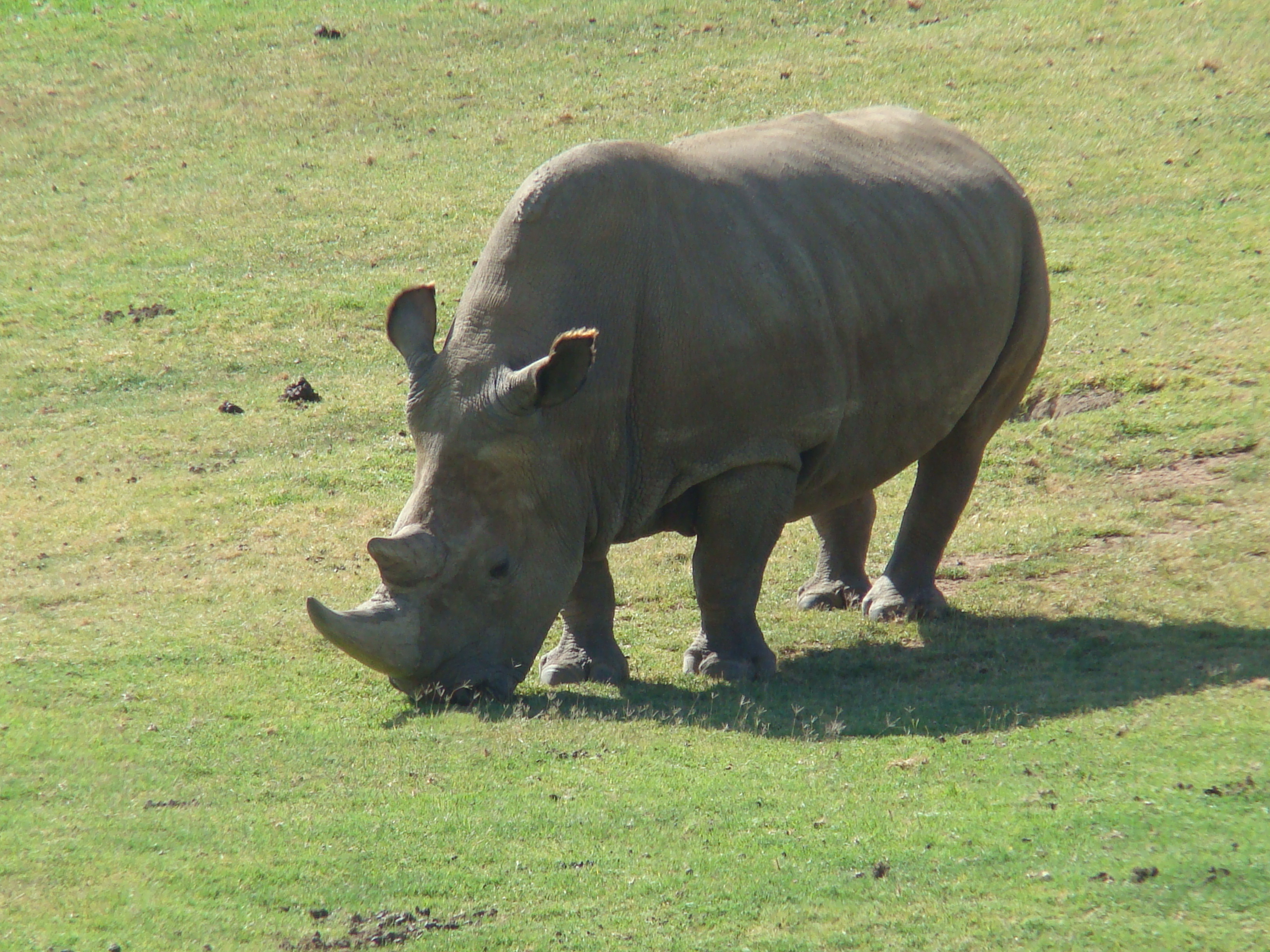
Angalifu, the late White Rhino.
This isn’t something new. It is hard to know what share of species goes extinct each year, as we don’t even know how many species there are on our wonderful planet. Science’s best estimates are that we lose roughly 0.01% to 0.1% of our species annually, which doesn’t seem that drastic at first, but actually translates to an estimated 10,000 to 100,000 species per year. 100,000! Never should the highlight of a year be a picture of Kim Kardashian on a magazine rather than the incredible amount of animals that died off in that year. In fact, extinction rates are so high, 1,000% to 10,000% higher than past non-altered extinction rates, that many are calling this episode the sixth mass extinction of all time. Keep in mind that historically, a mass extinction has been an asteroid slamming into the Earth. That’s not something we as humans want to emulate, and yet, we are heading toward that magnitude of an event faster than ever, with no real plan to stop it. Of course, we aren’t there just yet. It is estimated that by mid-century 30% to 50% of all species on Earth will go extinct, rivaling both the Triassic/Jurassic extinction and the Late Devonian mass extinction, considered two of the five biggest mass extinctions of all time. We are clearly at a point that we have to start doing something; a third of all amphibians are already going extinct, at a rate of 25,000-45,000 times the background or normal extinction rate. Even primates, our closest relative on this planet, have 50% of their population at risk of extinction. We aren’t on a good path here.
I’m not writing this just to depress you, though. We do have some hope, if not a way to stop the ultimate demise of much of the life on earth. As much as I wish it weren’t true, there is most likely no economical way to halt the pace of the industrial growth that is compromising our natural resources and habitats. Based on persistent long-term trends, it appears that sooner or later we will all be living in an urban or suburb environment (or a dustbowl, if you are Matthew McConaughey), and the associated environmental damage will be very hard to reverse. But this doesn’t mean that the affected species can’t come back from the dead. Although we aren’t exactly there yet, with a failed try at bringing an extinct species bucardo (a type of Spanish Ibex) back to life ending in a deformed baby dying soon after birth, we are getting extremely close. We all know that Jurassic Park is a fiction, as even the more recent Woolly Mammoth is too far back in time to clone. But, there are plenty of recently extinct species that are well on their way to being cloned, such as the Hawaii Po’ouli bird and more. This may be commonplace in the future, the cloning and repopulation of dying species. Earth’s animals are precious and define our planet; we want to protect them from our destructive impact for as long as we can. This is the first part in a 4 part series on de-extinction, increasing extinction rates, conservation technology and more. Check back the next installment in the series soon!
Sources: http://wwf.panda.org/about_our_earth/biodiversity/biodiversity/ http://www.biologicaldiversity.org/programs/biodiversity/elements_of_biodiversity/extinction_crisis/ http://www.bbc.co.uk/nature/extinction_events http://ngm.nationalgeographic.com/2013/04/125-species-revival/zimmer-text http://www.nature.com/news/2011/110823/full/news.2011.498.html